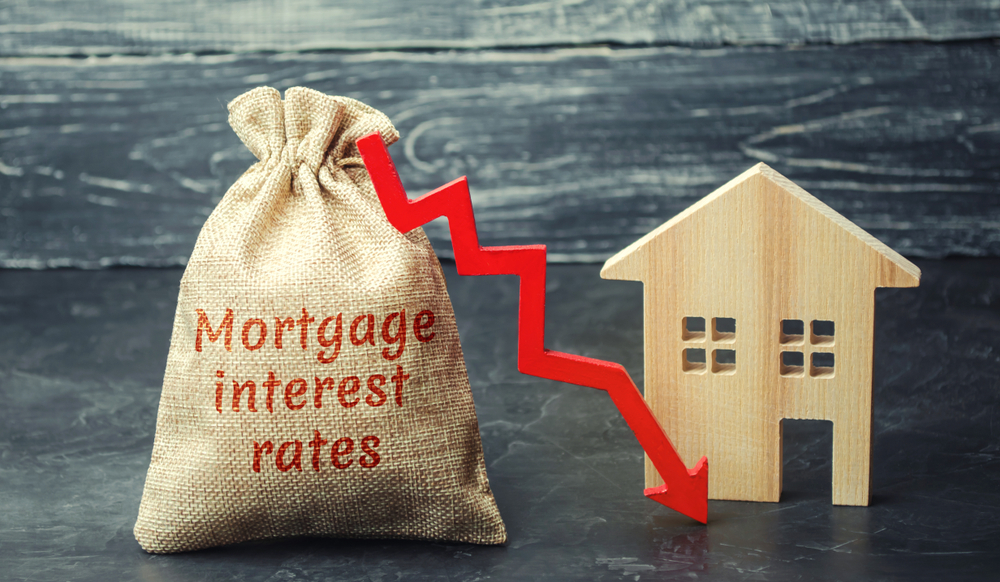What is Adjustable-Rate Mortgage In Real Estate

To answer what is an ARM in real estate, they are a type of mortgage loan in real estate. The interest rate fluctuates based on financial parameters associated with the loan. Thus, ARM or Adjustable-Rate Mortgage is a form of home loan with a floating interest rate.
However, before going into the intricacies of ARM, let us look at the people who make disbursements of mortgages so hassle-free, the Mortgage Loan Originators. They act as a bridge between the lenders and the borrowers.
To get a mortgage loan originator license, candidates must go through a mortgage loan originator course and pass a licensing exam. The online mortgage loan originator course is convenient and aspiring MLOs can study while on the go.
Getting back to ARM, it usually starts with a fixed rate for a few years, but after that, the rate can go up or down based on changes in financial markets, thereby changing the quantum of your mortgage payments. On the other hand, in fixed-rate mortgages, the interest rate is static throughout the tenure of the loan.
1. Initial fixed period
The interest rate in the initial period of ARMs remains constant. The period of fixed rates might range from a few months to several years.
2. Index and margin
The interest rate on ARM is typically linked to the U.S. Treasury Bill or the London Interbank Offered Rate (LIBOR). A margin is then added to this rate and offered to you by the lender.
3. Adjustment period
Once the fixed-rate period is over, the adjustment period kicks in and the interest rate starts fluctuating.
4. Interest rate caps
There is a cap on how much the interest rate can change over time. This is to protect borrowers from extreme fluctuations that might affect them financially. Common caps include annual caps and lifetime caps.
5. Interest Rate Components
ARMs are typically expressed as two numbers, such as 5/1 ARM. The first number indicates the length of the initial fixed-rate period, while the second number represents how often the interest rate adjusts after the initial period.
6. Advantages
- Lower initial rates: ARMs often come with lower initial interest rates compared to fixed-rate mortgages, making them attractive to borrowers who plan to sell or refinance before the initial fixed period ends.
- Drop in payment amounts: Borrowers get the benefit of lower mortgage payments when interest rates drop during the adjustable period.
7. Risks
- Rate fluctuations: The main risk with ARMs is the uncertainty of future interest rate changes. If rates rise significantly, borrowers could face higher monthly payments.
- Budgeting challenges: Monthly payments can become unpredictable, making budgeting more challenging for some borrowers.
8. Factors to consider
- Risk acceptance by borrowers: To know whether ARM meets their financial capability, borrowers must assess whether they can absorb the risk of higher mortgage payments.
- Plans: you must stop to consider how long you plan to stay in the home. If you anticipate selling or refinancing before the adjustable period begins, the initial lower rate may be advantageous.
9. Market conditions
ARMs can be more attractive in a low-interest-rate environment. You must understand current market conditions are crucial for borrowers considering this type of mortgage in the first place.
10. Disclosures and understanding
Here, if you are you, then you must carefully read and understand all terms, especially the loan disclosure documents, to be aware of potential future payment increases.
Therefore, before you choose an ARM, it's essential for you as a borrower to thoroughly understand the terms, potential risks, and how the loan will impact your financial situation in different interest rate scenarios.
The Differences Between ARMs and Fixed Rate Mortgages
1. Interest rate stability
- Fixed Rate Mortgage (FRM): The interest rate and monthly payments remain constant throughout the entire loan term.
- Adjustable-Rate Mortgage (ARM): Initially, the interest rate is fixed but then it starts fluctuating after 3, 5, 7, or 10 years based on market financial indices.
2. Rate adjustment
- FRM: The interest rate does not change, offering protection against market fluctuations.
- ARM: The interest rates fluctuate during the tenure of the loan after the initial fixed period.
3. Monthly payments
- FRM: Monthly payments are consistent and do not change over the life of the loan.
- ARM: Payments can vary after the initial fixed period, potentially increasing or decreasing depending on interest rate changes.
4. Predictability
- FRM: Borrowers know exactly what their monthly payments will be for the entire loan term, providing budgetary stability.
- ARM: Payments can become less predictable, especially if interest rates rise, leading to potential budgeting challenges.
5. Risk and uncertainty
- FRM: Low risk and suitable for those who prefer long-term stability.
- ARM: Involves some level of risk due to potential interest rate fluctuations, making it suitable for those comfortable with some uncertainty.
6. Initial interest rates
- FRM: Typically has higher initial interest rates compared to the initial fixed period of an ARM.
- ARM: Often starts with a lower initial interest rate during the fixed period, making it appealing to borrowers who plan to sell or refinance before the adjustment period.
7. Duration of commitment
- FRM: A long-term commitment with a fixed interest rate, suitable for those planning to stay in their homes for an extended period.
- ARM: It is a preferred option for those planning to refinance their homes before the start of the adjustable period.
8. Market conditions impact
- FRM: Unaffected by short-term fluctuations in interest rates.
- ARM: Vulnerable to changes in market conditions, with potential for higher payments if interest rates rise.
So, if you want to choose between an ARM and an FRM, then it all depends on factors such as individual financial goals, risk tolerance, and the length of time you as a borrower plan to stay in your home. It's essential to carefully consider these factors and understand the terms of each type of mortgage before you make a decision.
It's important for you as a borrower to carefully consider your financial situation, risk tolerance, and plans when opting for an ARM.

Example of How an ARM Adjusts Over Time
Basic conditions:
- Take the example of a 5/1 ARM. It means that the interest rate will be fixed for 5 years after which it will undergo an annual adjustment.
- The initial fixed rate is 3%, and the loan amount is $200,000.
Year 1 (Initial Fixed Rate Period):
- Your annual interest is calculated based on the fixed rate of 3%, resulting in an annual interest payment of $6,000 ($200,000 * 0.03).
- Your monthly mortgage payment is $500 ($6,000 / 12).
Year 6 (First Adjustment):
- The fixed period ends and the interest rate starts to adjust annually.
- Let's assume the index (e.g., U.S. Treasury Bill) increased by 1%, and the lender's margin is 2%.
- The new interest rate is calculated as follows: 3% (initial fixed rate) + 1% (index increase) + 2% (lender's margin) = 6%.
Year 6 Monthly Payment Calculation:
- Your annual interest is now $12,000 ($200,000 * 0.06).
- Your new monthly mortgage payment is $1,000 ($12,000 / 12).
Year 7 (Second Adjustment)
- Suppose the index remains the same, so there's no change in the index rate.
- The lender's margin still applies, and the interest rate remains at 6%.
Year 7 Monthly Payment Calculation:
- Your annual interest is again $12,000 ($200,000 * 0.06).
- Your monthly mortgage payment stays at $1,000.
Year 8 (Third Adjustment):
- Now, assume the index decreases by 0.5%, and the lender's margin is still 2%.
- The new interest rate is 3.5% (6% - 0.5%).
Year 8 Monthly Payment Calculation:
- Your annual interest is $7,000 ($200,000 * 0.035).
- Your new monthly mortgage payment is approximately $583 ($7,000 / 12).
Therefore, as a borrower, you must understand the potential variability in payments and consider their financial capacity and tolerance for risk when choosing an ARM.
What Are the Benefits of ARM?
1. Affordable Home Ownership in the Short Term: Because of the low mortgage payments initially, home ownership becomes an attractive proposition for borrowers.
2. Higher Savings: Borrowers get the benefit of increased savings if the interest rate remains static or falls during the adjustment period.
3. Beneficial for short-term homeownership: it can be advantageous for those of you who plan to stay in their homes for a relatively short period. If a borrower expects to sell or refinance before the adjustable period begins.
4. Interest rate caps provide protection: Interest rates are often capped, thereby limiting increases to reasonable levels during the adjustment period and the loan tenure. This provides a level of protection to prevent your payments from skyrocketing.
It's important to note that while ARMs have these advantages, they also come with risks, particularly the potential for higher payments if interest rates rise.
So, let us take into account adjustable-rate mortgage disadvantages and risks as well.
1. Uncertainty in Future Interest Rates: As the interest rate is tied to a specific financial index, it can fluctuate, leading to potential increases in monthly payments. This uncertainty can make budgeting more challenging for you.
2. Possibility of Increased Future Mortgage Payments: This happens when interest rates rise during the adjustment period. This risk is particularly relevant if market conditions result in higher index values and the lender's margin adds to the overall interest rate. This scenario is also referred to as “payment shock”.
3. Difficulty in Planning Long-Term Budgets: Unlike fixed-rate mortgages, where monthly payments remain constant, ARMs provide less predictability and room for planning. Therefore, changes in interest rates can lead to varying monthly payments, making it more challenging for you to plan and budget effectively long-term.
4. Potential negative equity: If property value declines during the adjustable period, you may face challenges if you need to sell your homes. Negative equity (owing more than the home is worth) can make it difficult to recoup the full value of the mortgage when selling.
5. Complex loan structure: ARMs can be more complex than fixed-rate mortgages, with factors like indexes, margins, caps, and adjustment periods. So, you must understand the terms and how changes in market conditions can affect the loan requires careful consideration from your side.